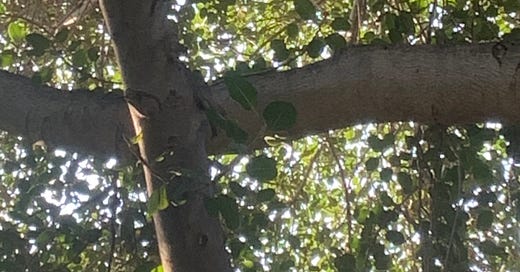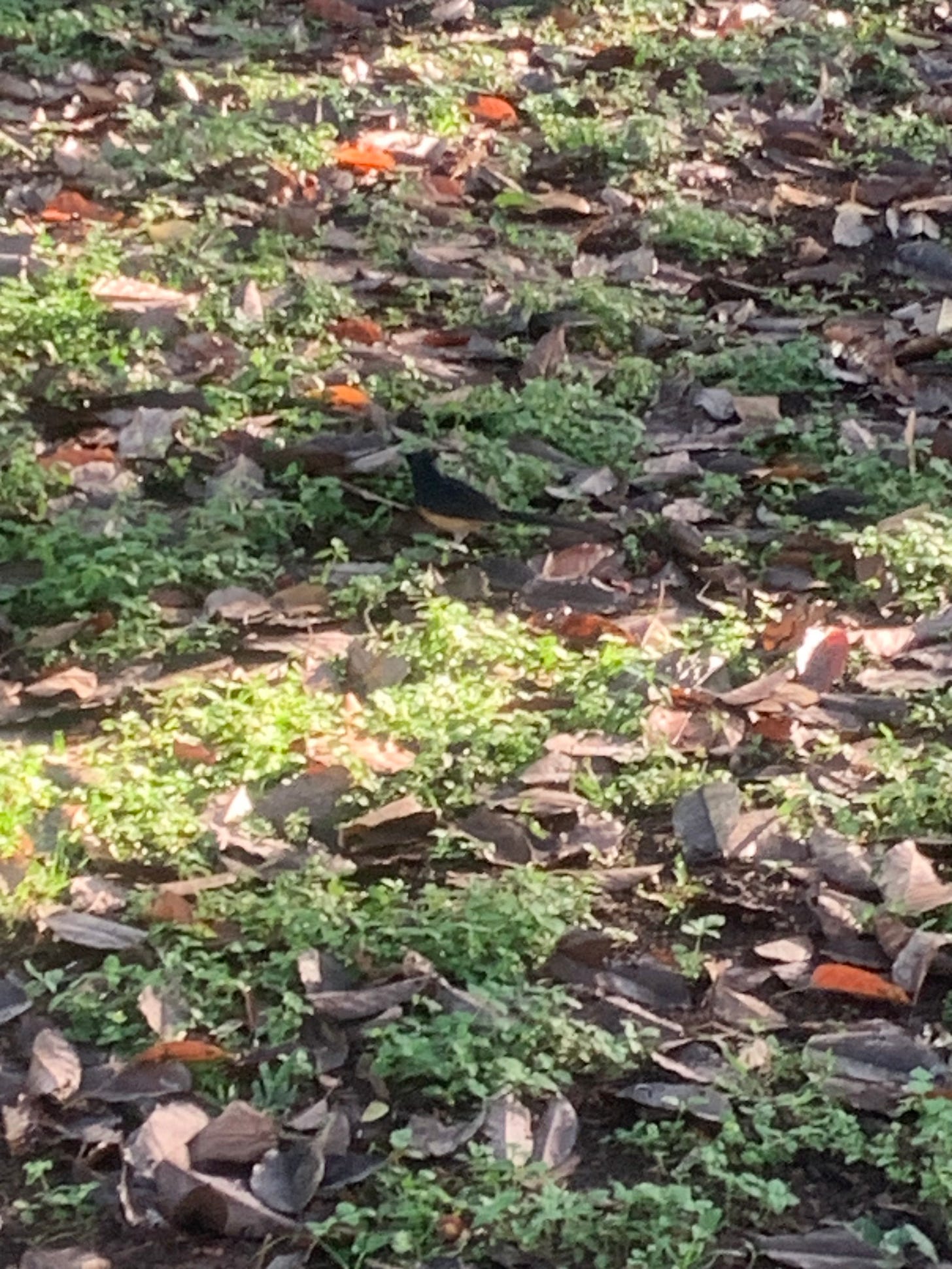On my morning walk, I heard a bird call that was familiar and unfamiliar.
Familiar in that I recognized the voice. Unfamiliar in that I was not accustomed to hearing that bird call on my usual walk. So I followed the song, just to see if I could locate the bird and confirm with my eyes what my ears were telling me—that a shama thrush had taken up residence in one of the trees in Ala Moana Park.
At first I thought I heard him singing in the Kigelia tree, dangling its sausage like fruit, and which had carpet bombed the grass with its plush mahogany blooms. But when I stopped to listen, I could hear that the song was coming from a location further to my left, so I walked in that direction, pausing to let my ears guide me. Soon I found myself in the cool green shade of the banyan tree.
A bird like the shama thrush is superbly camouflaged in the canopy. The one mark that instantly betrays its whereabouts is the white mark on its rump, which is why the bird also goes by the name white-rumped shama. But following the sound, I walked until the thrush’s liquid song seemed to pour down from the branch directly above me—and onto my head.
I looked up—and for a good thirty seconds struggled to see anything. Then as my eyes relaxed, I could just make out his elegant silhouette stamped against the green gold backing of the leaves, right where the morning sun was peeking through a break in the canopy.
Seeing him there was a small triumph of patience and perception.
The thrush continued to tweet and trill and query with his lush voice. Then he flew down and landed on one of the thick lower branches near the banyan’s trunk—and flashed his white rump.
And before I knew it, he had swooped to the ground—where I almost lost track of him because his black plumage and orange-umber underside blended so effortlessly among the shadows and the fallen leaves.







